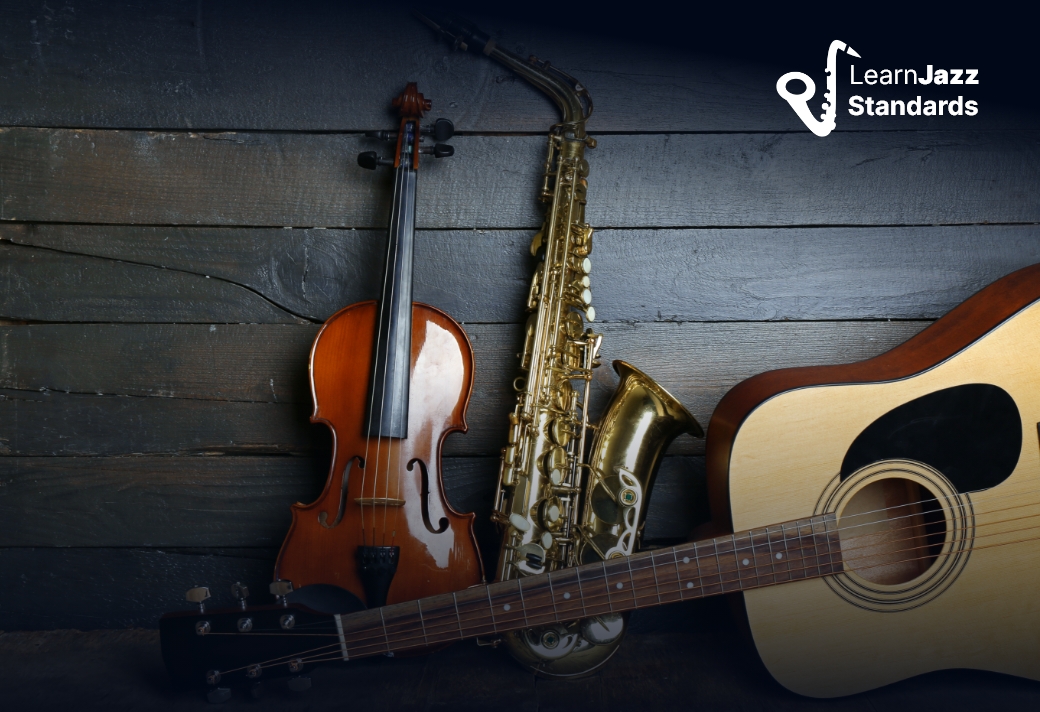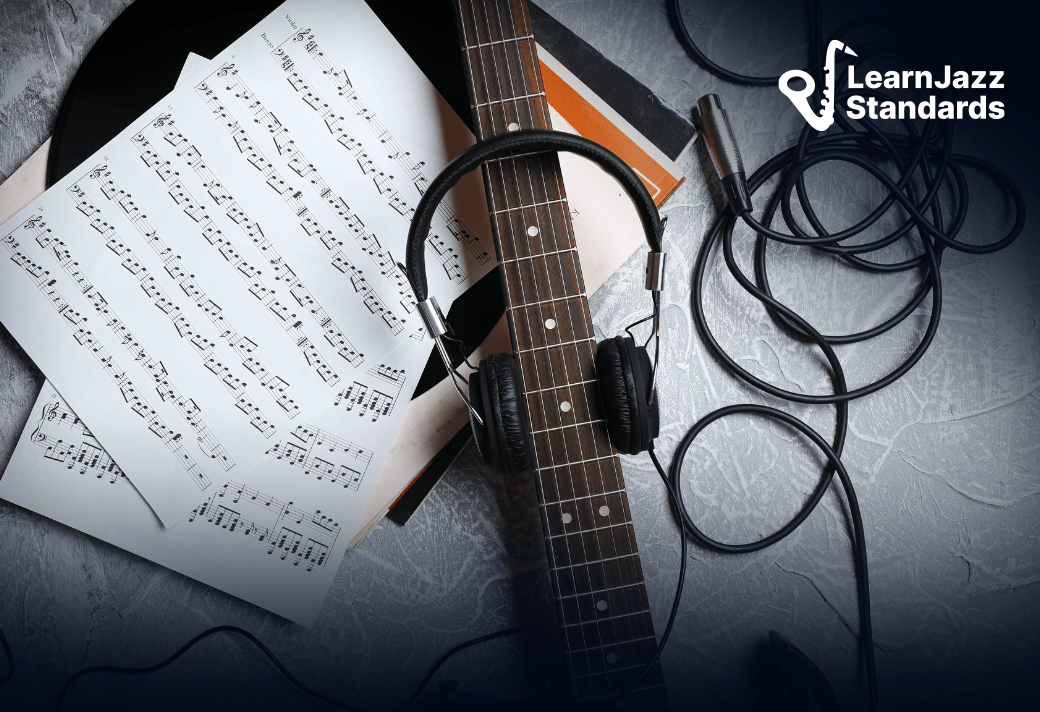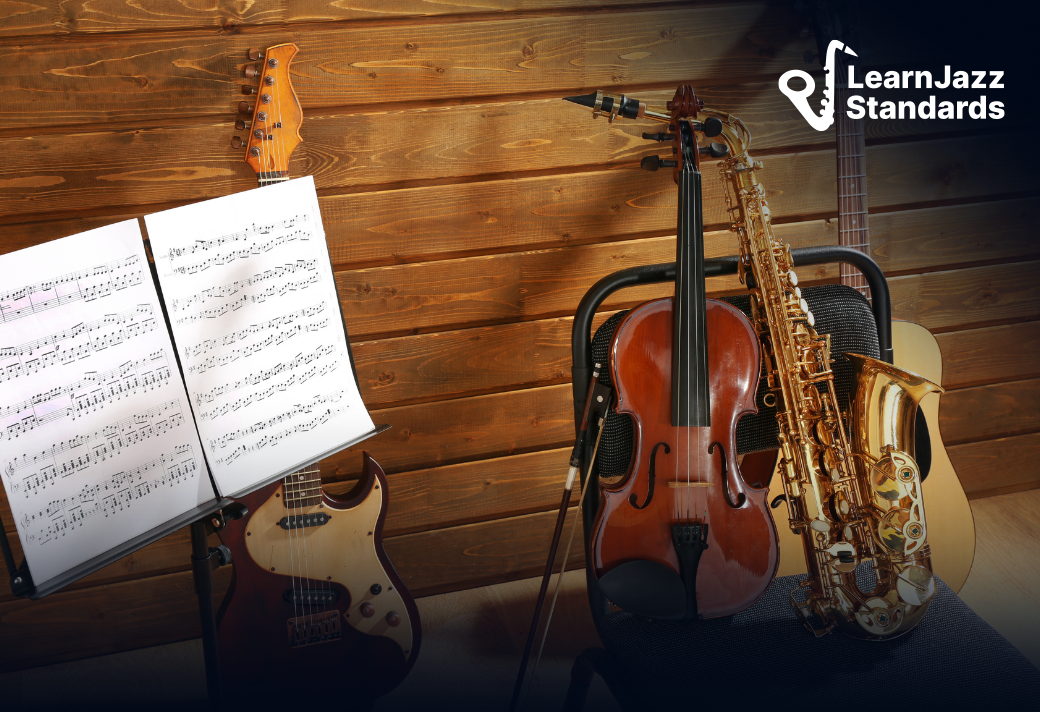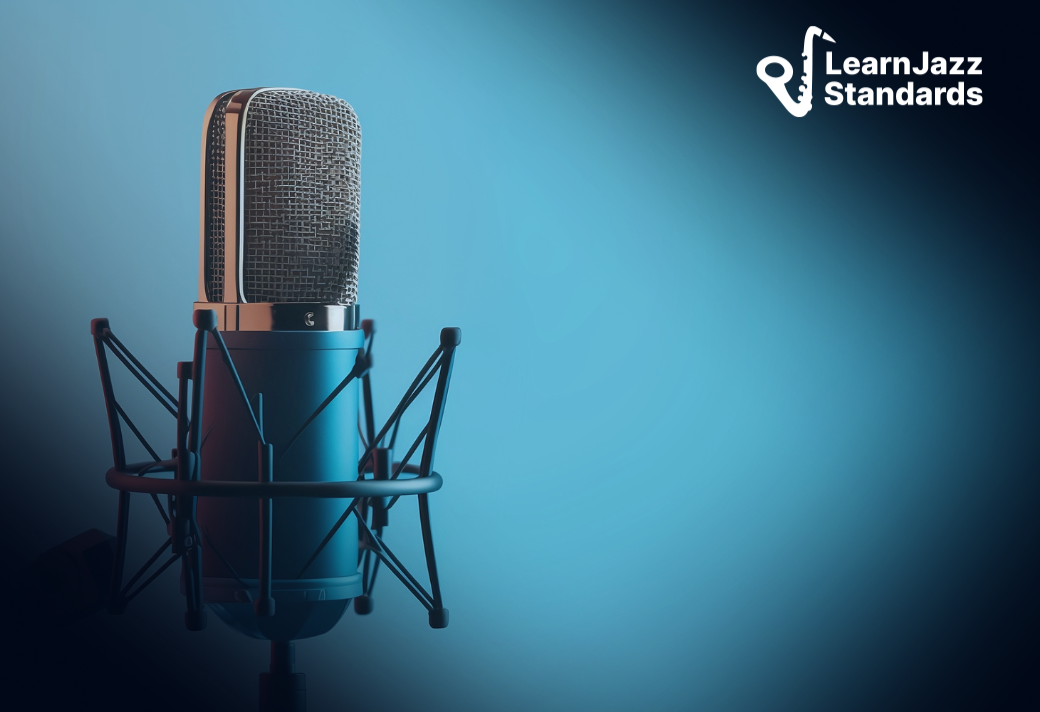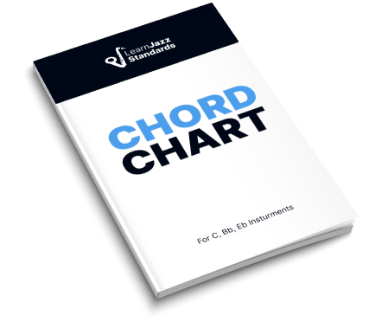Two of the freedoms we yearn for as musicians are recognizing chord progressions on the spot and understanding songs by ear. Being shackled by reliance on sheet music can be draining, especially in styles of music like jazz which are based on improvisation.
We all want to get to the level where we can hear any song and begin recognizing chord progressions. Wouldn’t it be great to listen to music and immediately start following along on your instrument?
Sure, most people can hear chords. But how does one develop the ability to identify chords by ear on the spot? But where do you start?
Ear training chord progressions.
But many musicians don’t know where to start with ear training. Luckily for you, we can get you started in 4 steps. If you follow these steps, you’ll be on course to hear seventh chords by ear, identify chord inversions, pick out individual notes, and enhance your musical life.
- Understand Chord Progressions
- Recognize Intervals
- Recognize Chords
- Recognize Chord Progressions
Plus, we’ll go through several ear-training exercises to help you work your ear muscles.
If you want to become the best jazz musician you can be but aren’t sure how to get there, check out the Learn Jazz Standards Inner Circle. With a decade’s worth of accumulated jazz education resources and best practices for making measurable progress, we know how to get you started on the right foot.
Come see what the Inner Circle is all about.
Table of Contents
Ear Training Chord Progressions Step 1: Understand Chord Progressions
The ability to hear chord progressions and easily identify any chord or note on any instrument is the musical holy grail. Though we can’t promise you perfect pitch, we certainly can give you the best practices for developing near-perfect relative pitch.
Ear training needs to start with some music theory. We need words and concepts for all the major chords, minor chords, chord inversions, chord voicings, and chordal relationships we will encounter in real music.
To start hearing chord changes, we need to understand how chords are constructed and how they change. If you already understand how triads and seventh chords harmonize with major scales and the Roman Numeral numbering system for chords, skip to step 2.
Though this post will be geared toward ear training exercises, we have to touch upon the theory first if we want to become an expert at recognizing chord progressions.
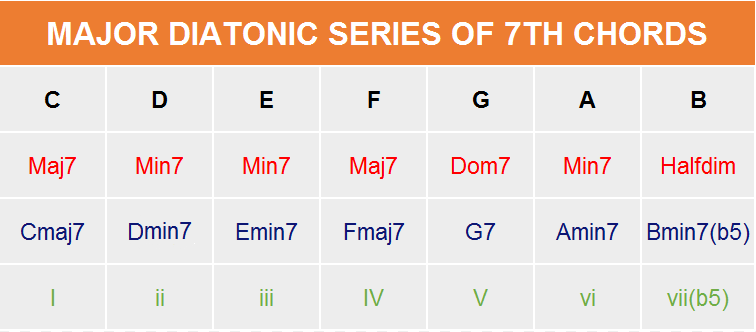
This is the Major Diatonic Series of Seventh Chords.
I have taken a concert C major scale and harmonized each note as a seventh chord (if you want more info on this, check out this post). There is a similar chart for triads, but I want to deal with seventh chords since they are the most common chords in jazz.
- The top line is the scale.
- The second line is the chord quality associated.
- The third line is the full chord name.
- The bottom line is the Roman Numeral association (Upper case= major and dominant. Lower case= minor).
From all of this, we can derive chord progressions.
For example, a ii-V-I chord progression in the key of C is Dmin7-G7-Cmaj7.
If it’s not immediately clear to you where I got that from, look at the chart. What’s the ii chord? Dmin7. What’s the V chord? G7. What’s the I chord? You can use this chart to create any different combination of chord progressions.
This is fairly basic, so make sure you have this concept down. If this is new to you, make sure you make this chart your friend and commit it to memory.
To learn more about how chords are constructed, check out our ultimate guide to seventh chords.
The Ear Training Process: Intervals, Chords, and Progressions
Now that you understand how chord progressions work in music theory, you can move on to building up the tools you will need to hear them. Before diving headfirst into chord ear training, you’ll need to identify the intervallic relationships between two notes.
Of course, the ultimate goal is to hear a chord progression, recognize it by name (I-vi-ii-V, etc.), and transfer that knowledge to your instrument.
Identifying intervals is the first step you need to take to identify chords by ear.
Here’s what I consider the order of operations for hearing any chord progression:
- Hear Intervals
- Hear Chords
- Hear Chord Progressions
Ear Training Chord Progressions Step 2: Recognizing Intervals
Let’s start with intervals. An interval is the distance between two notes. You should be able to identify different intervals in series, where you have a reference note and a second note played afterward.
Here are some example ear training exercises:
This is a major 3rd interval ascending. Now there is a whole slew of ways to memorize intervals like this, the most notable being associating them with songs you know. But I won’t go into depth on that now.
When it comes to chord progressions, though, it’s important to know what intervals descending sound like too. I’ll explain further in step 4. Here’s a Major 3rd descending:
There are 13 intervals ascending and 13 intervals descending if you include unisons and octaves for a total of 26 sounds you need to memorize.
Ear training exercise: We have a great interval ear training quiz for this that can help you practice.
Ear Training Chord Progressions Step 3: Chord Ear Training and Recognizing Chords
What makes up chord progressions? Chords!
You’ll need to be able to identify chord quality to transcribe chord progressions accurately.
Looking back at the Major Diatonic Series of seventh chords, each scale tone has been harmonized with a chord. Each one of those scale tones has a corresponding 7th chord:
- Major 7th
- Minor 7th
- Dominant 7th
- Half-diminished
BEFORE YOU CONTINUE...
If you struggle to play amazing jazz solos and want to learn the secret strategies the pros are using to improvise, our free guide will get you on the right track.

So if we want to hear a ii-V-I chord progression, it would be important to know what minor chords, dominant 7 chords, or major chords sound like. But before that, you want to know what the basic triads sound like.
The important thing is you understand how hearing individual chord types is a prerequisite for hearing entire chord progressions.
Chord Ear Training Exercise: check out this lesson and this chord ear training quiz.
Ear Training Chord Progressions Step 4: Chord Progressions Ear Training
After identifying static intervals and chords by ear, you can move on to identifying how chords move.
Take a listen to this common chord progression used in many popular songs:
I-V-vi-IV
I bet you’ve heard that before. This chord progression uses triads instead of 7th chords. Here’s what it is in the key of concert C (note that these are all root position chords):

So how do you recognize this chord progression by ear? Let’s break it down.
1. Progressions Ear Training: Identify the Root Note of Each Chord
This is where knowing your intervals becomes important.
Go back and listen to the chord progression again, and try to identify the interval between the first two root notes (the lowest notes you hear in the chord).
If you were listening closely, you would have heard a descending perfect 4th (C and G).
This is helpful if you can identify this as the I chord (we’ll talk about that next). Knowing the interval lets you figure out what the next chord will be.
Here is something important to know, though.
If the bass note moves ascending from the first note you hear, it’s easy to identify it. If it moved a perfect 4th ascending, it’s easy to know that we are dealing with a I-IV progression.
But that’s not the case with this ear training exercise. The interval moved a perfect 4th descending. That does not mean it’s a I-IV progression. In fact, if you sang that descending perfect 4th up an octave, it would be a perfect 5th ascending. This is important.
You need to understand how descending intervals convert to ascending intervals. Here are some formulas:
Minor 2nd Desc= Major 7th Asc
Major 2nd Desc= Minor 7th Asc
Minor 3rd Desc= Major 6th Asc
Major 3rd Desc= Minor 6th Asc
Perfect 4th Desc= Perfect 5th Asc
Tritone Desc= Tritone Asc
Perfect 5th Desc= Perfect 4th Asc
Minor 6th Desc= Major 3rd Asc
Major 6th Desc= Minor 3rd Asc
Minor 7th Desc= Major 2nd Asc
Major 7th Desc= Minor 2nd Asc
I hope I didn’t just overwhelm your brain there.
This may take you a second to grasp if you are a beginner. But the basic principle is that if you take any descending interval up an octave, you know what Roman Numeral you are dealing with as long as you have established the key center.
You can repeat this process by identifying the intervals from one chord to the next or establishing the I chord and relating each bass note to it.
2. Progressions Ear Training: Identify Chord Quality of Each Chord
Next, you need to determine the chord quality of each chord.
Once you have the root note figured out, you’ll need to identify the specific notes that give the chord its qualities. Here are some questions to ask:
- Do you hear a major third or a minor third?
- Is there a perfect 5th? Flat 5th? Sharp 5th?
- Is the 7th major or minor?
- Are there any extensions?
- Are any notes intentionally left out?
You can identify the intervals from the root note or attempt to stack the chord and identify it that way. This can be very challenging, and that’s ok. You will improve if you spend time doing it and checking your work against sheet music or transcriptions.
To start, try identifying the chord qualities in simple pop songs with one guitar or piano playing the chords. If you start small, your ear will soon be able to tackle any progression.
3. Progressions Ear Training: Establish the Key Center
In the case of this progression, we know that it starts on the I chord (I-V-vi-IV). But how would we know that without having that information? Part of it is simply memorizing what basic chord progressions sound like by listening to many songs from many different genres (classical music, jazz, pop, rock, etc.).
When you hear the first chord of the chord progression, you hear this:
Often, if the first chord is major, it’s the I chord (the key center). This is not always true, but it’s a good first assumption. If the first chord is minor, you start looking at the Major Diatonic Series and asking yourself which minor chord it could be.
You need to be able to piece together the song’s key from the context of the chords in the progression.
There are three major quality chords in diatonic major keys:
- I chord (major triad or maj7)
- IV chord (major triad or maj7)
- V chord (major triad or dominant 7th)
There are three minor quality chords in diatonic major keys:
- ii chord (minor triad or min7)
- iii chord (minor triad or min7)
- vi chord (minor triad or min7)
There is one diminished chord in diatonic major keys
- vii chord (diminished triad or min7b5/half-diminished chord
The ideal way is to condition your ear to hear this stuff automatically. It’s called ear training. But by breaking this process down, you can start building up that recognition.
Improve Your Ear Muscle. Join The Learn Jazz Standards Inner Circle.
Music students often ignore developing the ability to hear and transcribe music off their main instruments.
These musicians focus way more on playing songs rather than comprehending them. What they fail to realize is that all aspects of their musicianship, from improvising, memorizing, and being able to quickly play along with unfamiliar music, will be enhanced if they focus on ear training.
The Inner Circle is designed for jazz lovers who want to get serious about improving as musicians. If you find yourself hitting walls in your practice and don’t know how to get over those humps, come see what we have to offer.
The Inner Circle helps musicians reach their performance and musicianship goals through structured, proven tactics that emphasize building your ear muscle.
Join the Inner Circle. You’ll never hear chords the same way again.


